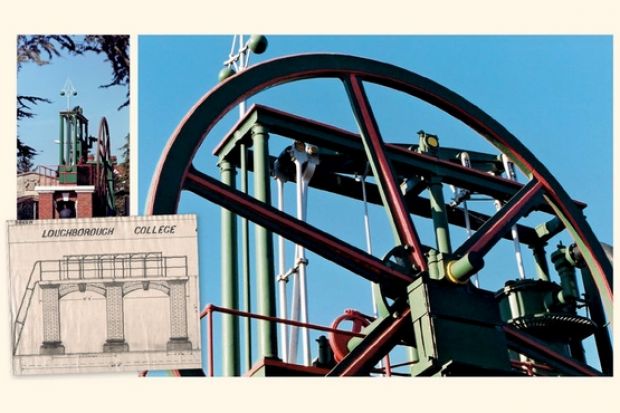This beam engine stands on the Loughborough University campus close to the students’ union. It was presented to the university’s forerunner, Loughborough College, by the London Metropolitan Water Board in 1934.
Although the first successful steam engine had been built by Thomas Newcomen in 1712 to pump water out of mines, James Watt (1736-1819) improved on his design in 1769 and continued to incorporate radical new features such as a separate condenser, an air pump and a pendulum governor.
Right until the end of the 19th century, such engines were used as an essential means for providing power.
The steam engine at Loughborough was built by James Watt & Co, Soho, and supplied to the South London Water Works in 1850. Later it was moved to the Thames Ditton Works of the Lambeth Water Company for draining filter beds and remained in service at Surbiton until 1933.
The boiler of the Watt engine arrived at the college, pulled by five horses, in May 1934, with its installation supervised by James Driver, head of the institution’s department of electrical engineering.
The drawings for the supporting structure remain in the university archives.
Send suggestions for this series on the treasures, oddities and curiosities owned by universities across the world to matthew.reisz@tsleducation.com
Register to continue
Why register?
- Registration is free and only takes a moment
- Once registered, you can read 3 articles a month
- Sign up for our newsletter
Subscribe
Or subscribe for unlimited access to:
- Unlimited access to news, views, insights & reviews
- Digital editions
- Digital access to THE’s university and college rankings analysis
Already registered or a current subscriber? Login
